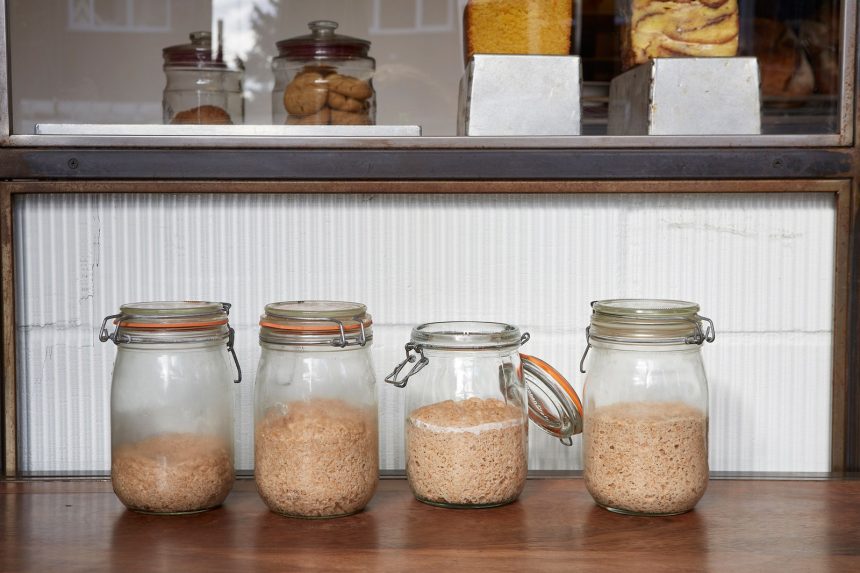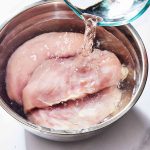Sourdough is the name given to a natural process of fermentation used most often to leaven bread and other doughs. It is an ancient process that at its most simple involves mixing flour, water and salt and waiting hours or days and then baking the mix.
The act of combining flour and water and leaving it to ferment will create a starter that provides the natural leavening for the dough. Wheat or rye flours are commonly used to make a starter and the yeast and bacteria that are naturally present on the grain are harnessed, concentrated and trained to behave in a predictable way.
Creating and maintaining the starter through regular refreshments during its establishment and thereafter, means that a loaf of bread is always within your reach. A vigorous starter will produce a lighter loaf and more satisfying results. If the starter is happy, the bread will be good.
A basic sourdough starter can be made with any wheat or rye flour – it doesn’t have to be fancy or expensive. I find wholegrain and organic flour is best as you are trying to harness the natural organisms present on the grain, so the more the better, although it isn’t absolutely necessary. Tap water is perfectly fine for sourdough starters and doughs – you can use very slightly warm water if the weather is cold and you want to give your starter or dough a boost. The number of days it takes to make the starter will vary; in warmer weather the starter will ferment faster and the reverse is true in very cold weather or if your kitchen is especially cold. A starter made with white wheat flour may take an additional 1–2 days longer to ferment and establish but should be ready to use by the end of 21 days.
See more recipes from Modern Sourdough.
Tips
Leave the starter in a warm place
During summer the kitchen work surface is fine, in winter choose a constantly warm area – on top of the fridge, for example. Keep at room temperature throughout and once your starter is ready to include in recipes, refer to How to store your starter.
Use a clean jar
Transfer the starter to a clean jar every day at the beginning of the process. It is best to use a Kilner jar or a large jar with a cloth on top secured with an elastic band. Avoid jars with screw top lids for storing sourdough starters as they don’t allow the gases to escape.
Mixing the starter
Always mix the starter with clean hands or a clean spoon until all the flour is hydrated and no dry patches remain.
This recipe is from Modern Sourdough by Michelle Eshkeri (White Lion Publishing).







